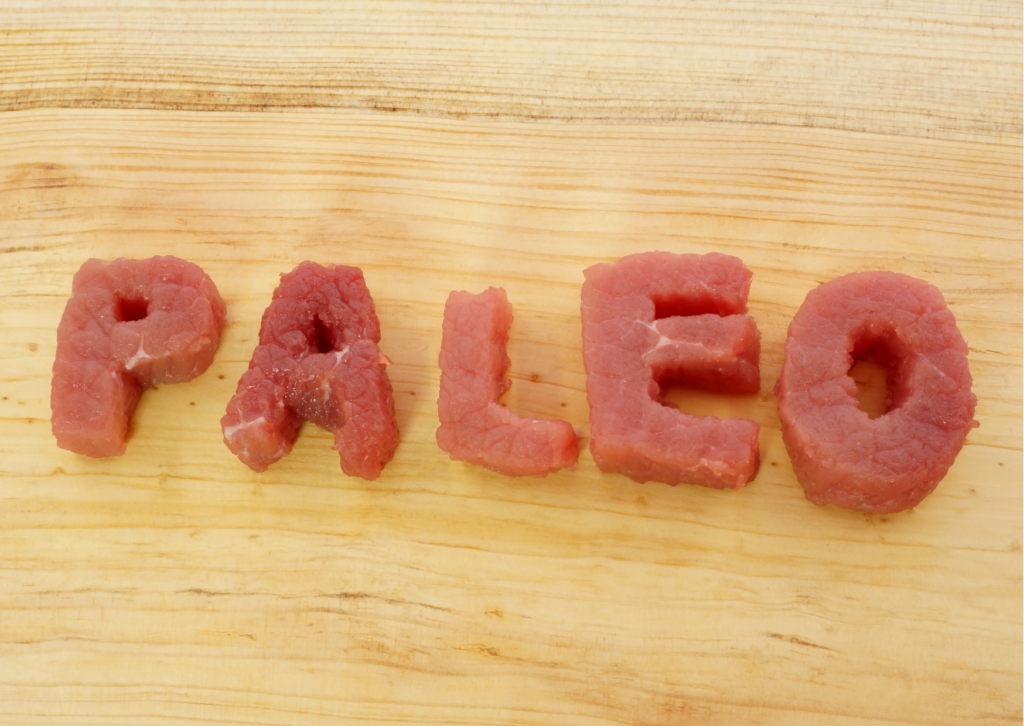
If you’re like most people, you’ve probably heard of the Paleo Diet but aren’t quite sure what it is. The Paleo Diet is a way of eating that mimics the way our ancestors ate thousands of years ago. It focuses on eating whole, unprocessed foods and avoiding processed foods, sugar, and grains.
Proponents of the Paleo Diet believe that this way of eating can help improve your health and wellness. In this blog post, we will discuss the benefits of the Paleo Diet and how you can start incorporating it into your life!
Table of Contents
What is the Paleo diet?
The Paleo diet is a dietary approach that focuses on eating foods that are considered to be healthy and nutritious, like fruits, vegetables, lean protein, and whole grains. The idea behind the Paleo diet is that our ancestors who lived during the Paleolithic era ate these types of foods, so following a similar diet, today can help improve our health.
What are the guidelines for a Paleo diet?
The Paleo diet is based on the idea that humans are genetically programmed to eat a specific way–the way our Paleolithic ancestors ate. The Paleo diet consists of foods that can be hunted or gathered, such as meat, fish, poultry, eggs, fruits, vegetables, nuts, and seeds.
One of the main guidelines for the Paleo diet is to avoid processed foods. This means eating whole, unrefined, and natural, foods. Another guideline is to avoid added sugar. The Paleo diet also recommends avoiding dairy, legumes, and grains.
Some people may think that the Paleo diet is too restrictive. However, there are many delicious Paleo-friendly recipes available online and in cookbooks.
The Paleo diet can help you lose weight, improve your health, and boost your energy. It may take some time to adjust to the new way of eating, but it is well worth it! Give the Paleo diet a try and see for yourself how great it can be.
What are the health benefits of the Paleo diet?
The Paleo diet is often lauded for its health benefits. Proponents of the diet claim that it can help with weight loss, improve digestion, reduce inflammation, and more. While there is some scientific evidence to support these claims, more research is needed.
If you’re considering trying the Paleo diet, it’s important to speak with your doctor first to make sure it’s the right diet for you. The Paleo diet can be a healthy way to lose weight or improve your health, but it’s not for everyone. Make sure to read up on the diet before starting and always listen to your body to see if it’s working for you.
Is the Paleo diet safe to follow? Are there any negative effects?
There is no one-size-fits-all answer to this question, as the Paleo diet can be tailored to fit each person’s individual needs and preferences. However, following a Paleo diet has been shown to have many health benefits, such as reducing the risk of chronic diseases, improving heart health, and healthily losing weight.
Some people may experience negative side effects when starting a Paleo diet, such as fatigue or constipation, but these usually go away after a few weeks. Overall, the Paleo diet is a healthy and sustainable way to eat that can improve your health and well-being.
What is the stone age diet?
The Paleo Diet is a way of eating that is based on the types of foods presumed to have been eaten by early humans during the Paleolithic era – a period of about two million years – until the advent of agriculture.
The thinking behind the diet is that our genes have not had enough time to adapt to many of the foods that are now common in the Western diet, such as dairy products, legumes, and grains. These foods are thought to contribute to a variety of health problems, such as obesity, type II diabetes, heart disease, and autoimmune disorders.
The Paleo Diet is therefore centered around eating whole, natural, foods that would have been available to our Paleolithic ancestors, such as meat, fish, vegetables, and fruit. Some people also choose to include nuts, seeds, and healthy oils in their diet.
What does the paleolithic diet consist of?
The paleolithic diet, also known as the caveman diet or stone-age diet, is a nutritional plan based on the presumed eating habits of early humans during the Paleolithic era.
The main idea behind the Paleo Diet is that by consuming foods that our ancestors ate during the Paleolithic period, we can improve our health.
The logic behind this is that the human body has not evolved to handle the modern diet, which is full of processed foods and refined sugars.
By consuming a diet that is more in line with what our ancestors ate, we can supposedly avoid many of the health problems that are common in Western societies today.
Some of the foods that are included in the paleolithic diet are meats, fish, vegetables, fruits, nuts, and seeds.
The diet excludes dairy products, grains, legumes, processed oils, salt, alcohol, coffee, and sugar.
So what are some of the benefits of following a paleolithic diet?
There are several potential benefits associated with following a paleolithic meal.
Some of the most commonly cited benefits include weight loss, improved cardiovascular health, and decreased inflammation.
Additionally, the paleolithic meal has been shown to improve blood sugar control in people with type II diabetes.
While there is still more research needed to confirm these potential benefits, the paleolithic meal is worth considering if you are looking to improve your health.
If you are interested in trying out the paleolithic meal, there are a few things to keep in mind.
First, make sure to consult with your doctor or a registered dietitian to make sure the diet is right for you.
Second, take it slow when transitioning to the diet. It can be a big change to your regular eating habits and may take some time to get used to.
Finally, make sure to include plenty of healthy foods in your diets, such as fruits, vegetables, meat, and fish. This will help ensure that you are getting all the nutrients you need.
What is the autoimmune paleo diet?
The autoimmune paleo meal is a variation of the paleo diet that is specifically designed to help people with autoimmune diseases. The goal of the autoimmune paleo meal is to reduce inflammation and improve gut health.
The autoimmune paleo meal is based on the principles of the paleo diet, which is a nutrient-dense, whole foods diet that excludes prepackaged foods, grains, legumes, dairy, and sugar. The autoimmune paleo diet also eliminates nightshade vegetables, which are thought to contribute to inflammation.
What is the benefit of eating paleo foods?
Standard benefits:
- You’ll feel better and have more energy.
- Your skin will look healthier.
- You’ll lose weight, get stronger, and live longer.
Emotional benefits:
- Get the body you’ve always wanted!
- Eat foods that make you feel good, not bad.
- Connect with your food and your ancestors.
- Find out what works best for you and stick to it!
There are many benefits to eating paleo meals, but the main ones are that you’ll feel better, have more energy, look healthier, and lose weight.
What are highly processed foods?
Highly processed foods are those that have been altered from their natural state, often to extend their shelf life or make them more convenient to consume. This includes items like packaged snacks, deli meats, and soda.
The Paleo foodstuffs are based on the premise that humans should eat the same types of foods that our hunter-gatherer ancestors did. This means consuming whole, natural, foods like fruits, vegetables, meat, and fish.
There are a few key reasons why proponents of Paleo foodstuffs believe that it’s beneficial for our health. First, they argue that by eliminating prepackaged foods from our diets, we’re less likely to consume empty calories that can lead to weight gain. Second, they claim that Paleo foodstuffs can help reduce inflammation in the body, which is thought to be a key factor in many chronic diseases.
If you’re interested in trying the Paleo menu, there are a few things you should keep in mind. First, it’s important to make sure that you’re getting enough vitamins and minerals from other sources since many of the foods on the Paleo menu are low in key nutrients like calcium and vitamin D. Second, it can be difficult to stick with this type of diet if you don’t enjoy cooking or eating a lot of vegetables.
What does metabolic syndrome cause?
Dysmetabolic syndrome can lead to cardiac infarction, stroke, and diabetes. It is caused by a combination of factors including high blood pressure, high blood glucose, excess body fat around the waist, and abnormal cholesterol levels. These conditions occur when you have too much bad cholesterol (LDL) and not enough good cholesterol (HDL), or when your triglyceride levels are too high.
The Paleo menu is a way of eating that focuses on consuming whole, natural, foods. This includes lean meats, vegetables, fruits, nuts, and seeds. The diet excludes dairy products, grains, legumes, processed oils, salt, alcohol, coffee, and sugar. The idea behind the Paleo menu is that by eating this way, you will reduce your risk of developing heart disease, stroke, and diabetes.
There is some evidence that the Paleo menu can help improve blood glucose control in people with diabetes and may also help to reduce the risk of heart disease and stroke. However, more research is needed to confirm these benefits. If you’re thinking of trying the Paleo menu, talk to your doctor or a registered dietitian first to make sure it’s right for you.
What are the five signs of metabolic syndrome?
A metabolic syndrome is a group of risk factors that occur together and increase your risk for heart disease, stroke, and diabetes. The five signs of the dysmetabolic syndrome are:
- abdominal obesity (excess fat around the stomach)
- high blood pressure
- high blood sugar levels
- low HDL cholesterol levels (“good” cholesterol)
- elevated triglyceride levels (a type of fat in the blood)
The good news is that dysmetabolic syndrome can be treated and even prevented with lifestyle changes, including a healthy diet and regular exercise. The Paleo menu is one way to help improve your health if you have the dysmetabolic syndrome.
